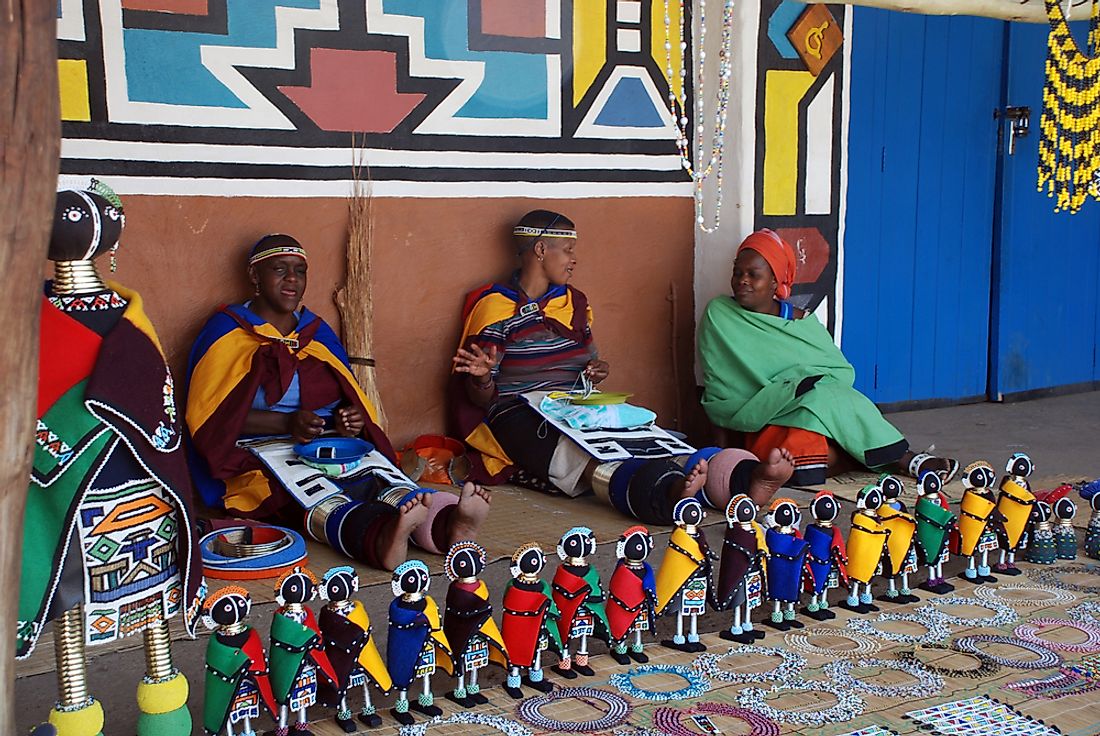Who are the Ndebele?

The Ndebele people are one of the southern African ethnic group among the Nguni speakers who represent the black people of South Africa. The Nguni people are about 67% of the total population of South Africa’s black people and are sub-divided into the southern Nguni, the central Nguni, the Swazi from Swaziland, and Mpumalanga Gauteng Ndebele people.
The groups of Ndebele are distinguished geographically, as well as by their culture and language. The tribes of the northern province Ndebele, the Bagaseleka and the Bagalanga, speak the Sotho language and imitate their culture. The north Ndebele in South Africa lives in the area between Warmbaths and River Limpopo and between the Botswana border to the west of south Africa and the Mozambique border to the east.
Ndebele Socio-Cultural Life
The Ndebele has similar authority structures with that of the Zulu. The head of the tribe is in charge of the authority with the help of family council.
Women usually put on traditional ornaments which symbolizes their marital status in the society. Married women put on more elaborate dresses with lifetime rings of brass and copper in their necks, arms and legs to denote their truthfulness and bond to their spouses in past times. They also wore hoops around their necks which were made of grass, coiled and enclosed in beds for traditional occasions. Married women also put on a five-fingered overall after giving birth to the first child to mark the peak of the marriage. The blanket was adorned with beadwork to record essential occasions during the woman’s lifetime. The Ndebele boys are dressed in the small forward-facing overall of goatskin or stay naked but girls put on decorated skirts. Arts and designs were done by women for instance decoration of houses using different paints.
The initiation rite of passage denotes the shift from babyhood to maturity in the Ndebele community. Both boys and girls undergo circumcision after every four years. The initiates are kept isolated in a place where they are trained to become adults.
The marrying couples must be from different clans of the community. Ladies were usually married after their seclusion when undergoing initiation and given marriage decorated blanket.
The Ndebele land was owned communally, and parts of the land were given to different families by the area chief and headmen with a fee. The grazing fields were free for all the Ndebele cattle keepers since its ownership was communal.
The main economic activity of the Ndebele is farming. The Ndebele kept cattle and goats as both profitable and sustenance activity. They cultivate crops like sorghum, maize, pumpkins and green vegetables.
The Ndebele also took part in the industrial arts and crafts like knitting of sleeping mats, grain mats and sieves as economic activities. They also traded in clothes, glass beads, and tobacco.
Ndebele Beliefs
The Ndebele community traditionally thought that external powers such as a spell or a curse were the reasons for illness. Customary medicine persons were able to heal such diseases. Many of the Ndebele people have nowadays converted to Christianity while some still obey old worship.
Due to inside conflicts, the Ndebele separated into the currently northern Ndebele and southern Ndebele.











